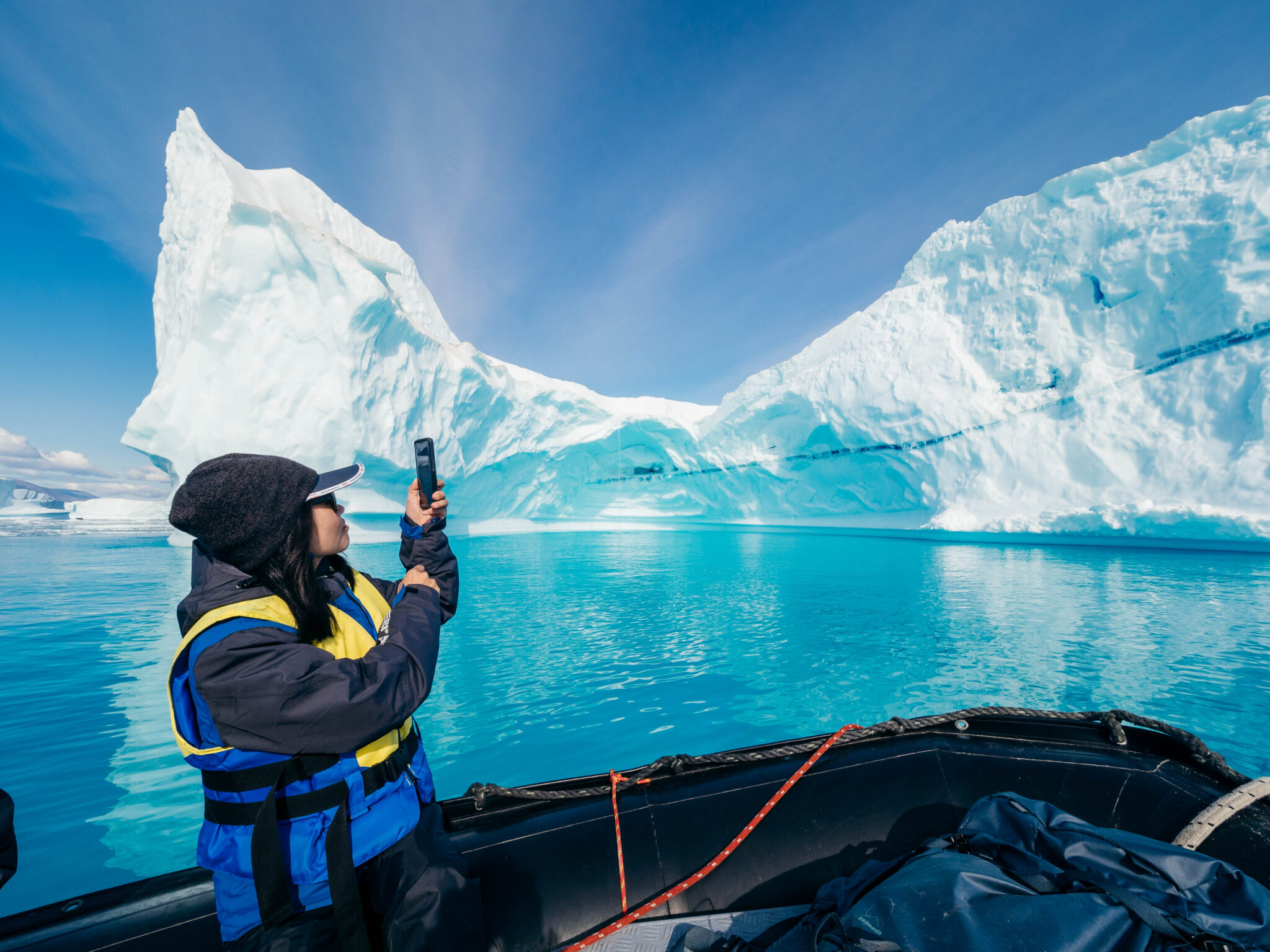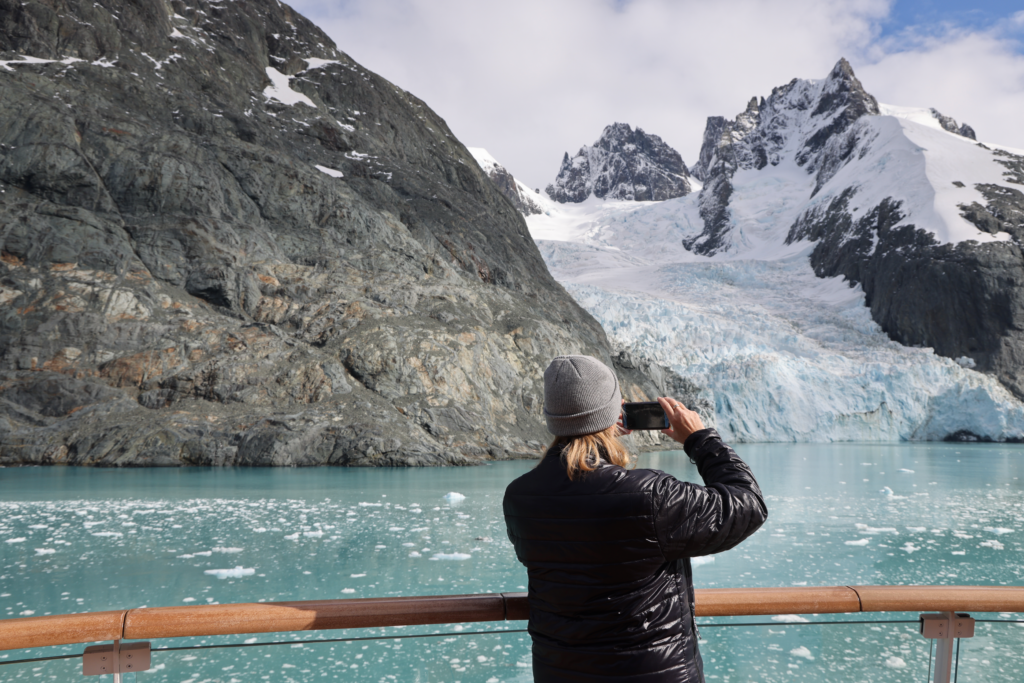When you set out on a once-in-a-lifetime voyage with AE Expeditions, you’ll want to capture the experience to remember for years to come. For some travellers, this will mean breaking out the DSLR and all their lenses, but can you achieve similar results with just your phone?
The expert photography guides from AE Expeditions illuminate some handy tips and tricks to help you get the most from your smartphone on your trip!

Having the right equipment
Smartphone cameras have improved significantly over recent years, evolving to have higher image quality and better functionality. However, if you are intent on achieving the best images possible with a phone, there are a few features to look out for.
As small as it may appear, the lens on the back of your smartphone plays a considerable role in the quality and clarity of your images. Phones whose cameras have a large aperture number equate to more light in your photos – especially useful in situations where there is low light and you can’t use flash. Look for smartphones with aperture numbers of f/2.2 or less for optimum results.
Megapixel count can be another indicator of potentially high image quality. The more megapixels, the more information and detail can be captured in an image.
Lastly, keep an eye out for optical image stabilisation, a desirable feature that can help to reduce blur in handheld photos as well as helping to capture smooth video.
Optional smartphone photography accessories
Just because it’s a smartphone camera, doesn’t mean you can’t accessorise. A growing number of accessories are becoming available for smartphone photographers to get the most out of their shot. These include clip on lenses that can create extreme wide-angle or fish-eye effects as well as zooming in beyond your smartphone’s standard capability.
In addition, you may want to consider a small tripod for your smartphone if you’re planning on taking landscape shots of the snow-capped mountains in South Georgia or icebergs in the Arctic. This can help to stabilise your phone to reduce any camera wobble caused by shaky hands or the movement of the boat.

All the right apps
While your smartphone will have an in-built camera application, there are also a number of other mobile applications that can help to boost your photography experience.
If your phone’s automatic exposure just isn’t doing your subject justice, sometimes it pays to adjust the settings manually. This means you can have control over settings such as ISO (light sensitivity), as well as aperture (amount of light coming through the lens) and shutterspeed.
Apps such as Manual Camera for Android can help to achieve this, as well as Camera FV-5. When it comes to iOS devices, VSCO Cam offers similar settings, while also providing a wide range of stylistic filters to give you even more creative options.
In the moment
When taking your snaps, it’s best to have both hands on the phone for stability. If you’re used to taking pictures on portrait mode, consider turning your phone horizontal – you’ll be rewarded when viewing your pictures back home!
Try to avoid zooming too much on your phone to preserve image quality. As most smartphones usually do not have optical zoom functionality, they will rely on a digital zoom to get you a closer image. Digital zoom involves digitally cropping your image, decreasing the original photo resolution and losing detail.
For the best chance of getting your best ever photos, join one of our photography expeditions. Led by experienced photographers, you’ll not only have the chance to get up close and personal to some of the world’s most incredible scenery and wildlife, but you’ll also learn some valuable skills and hopefully walk away with some great pictures.

